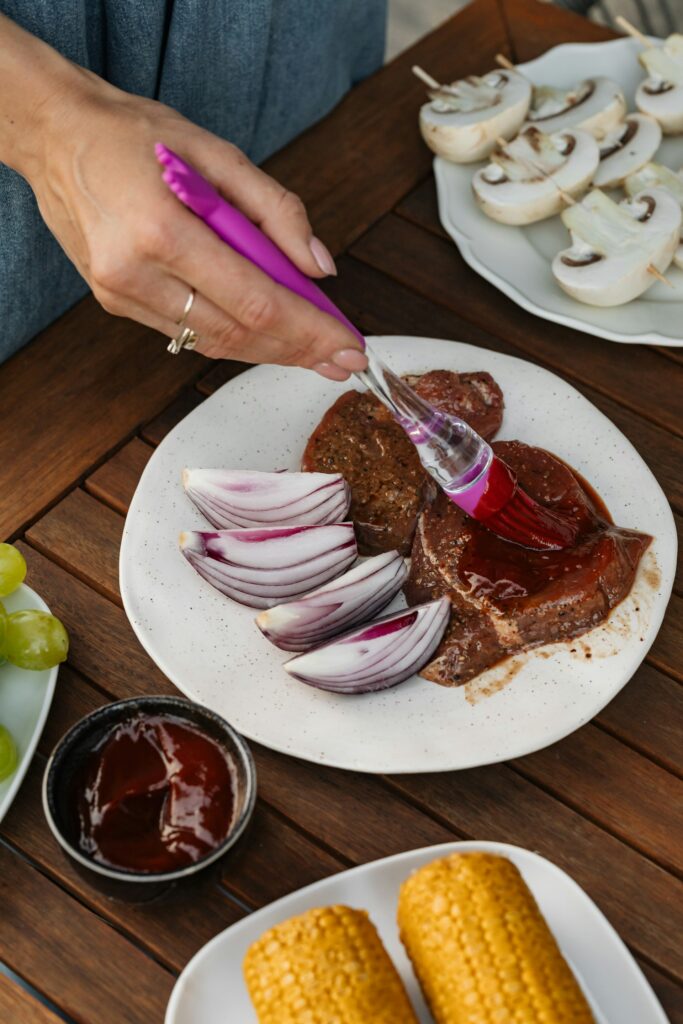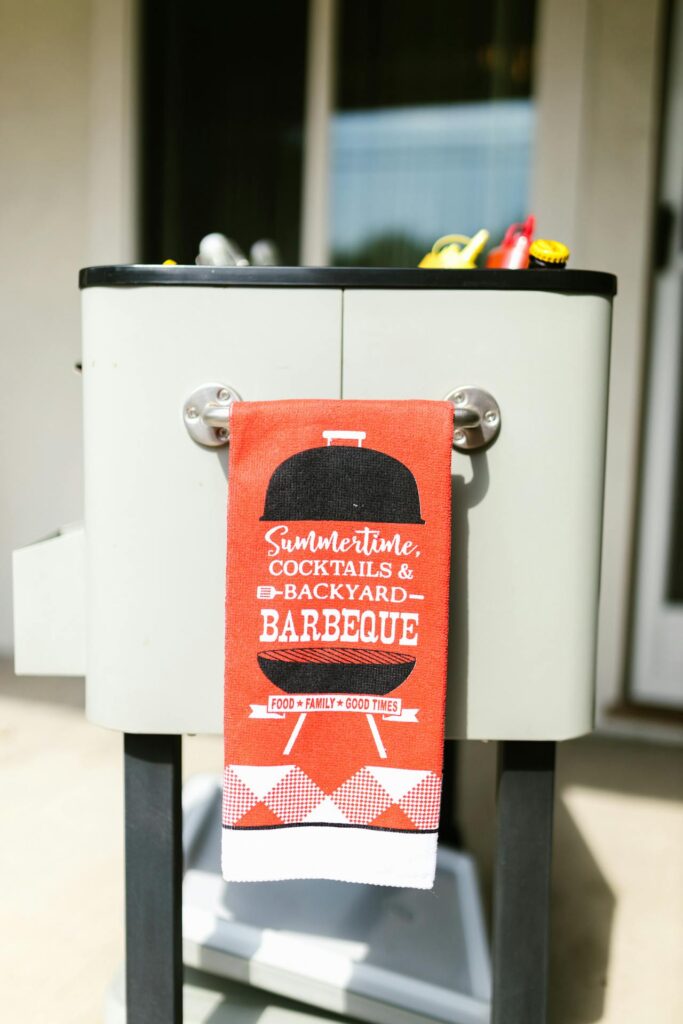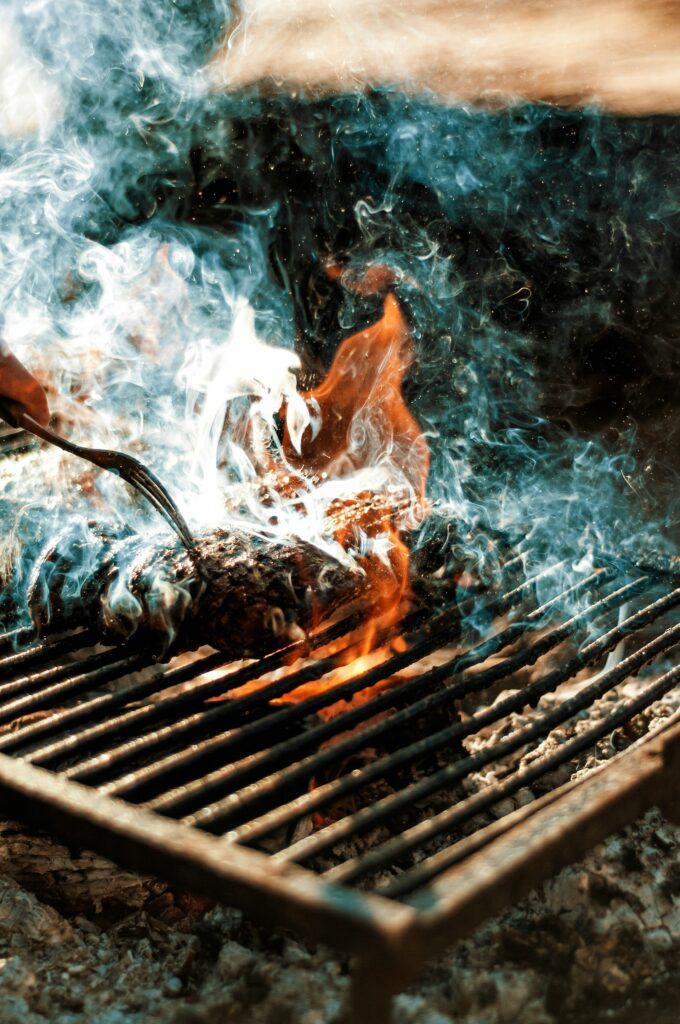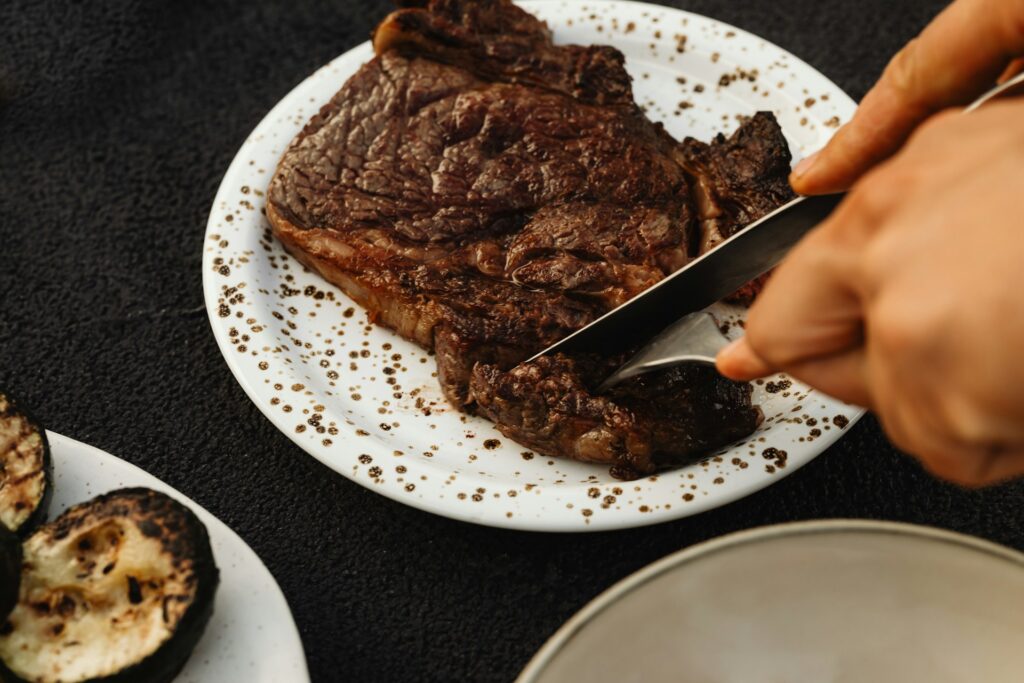When the sun is shining and the garden beckons, there’s nothing quite like a perfectly cooked steak on the BBQ. The sizzle of meat on hot grates, the anticipation of that first succulent bite, and of course that first smell of the barbie heralding the start of the season; these are the makings of a quintessential British summer’s day.
According to a recent survey by Great British BBQ, who wanted to find out about the BBQ habits of us Brits, 32% of participants said that steak is their favourite meat to cook on the barbie.
However, as much as we love a steak, us Brits are often guilty of getting a little overexcited at the smell of charcoal, throwing our steaks on the barbecue and hoping for the best. But with the price of a steak rising and barbeques getting more expensive, it’s increasingly important to grill with the proper care and attention that your carefully sourced meat deserves.
But how does one achieve the nirvana of a flawlessly barbecued steak? Before the flames fizzle out and the coals lose their glow, let’s get this thing covered…
Selecting Your Steak
First thing first, the journey of cooking steak well on the BBQ begins at the butcher’s counter. Buy independently, from a local butcher if you can, so your meat’s provenance is easier to trace. These guys care deeply about their products and can offer advice on how to cook a steak. On our last trip to the butchers, they mentioned that seared steaks would need a high heat of around 230-260°C to achieve that bark we’re all after.
What makes a great steak is, of course, a matter of personal preference. Do you value a melt-in-the-mouth tenderness, the texture of butter and a minimal effort in chewing? Or, is a chewier, more flavourful cut your thing? Here are some of the top cuts for barbecuing:
- Ribeye: Rich in marbling, which promises a tender and flavourful experience.
- Sirloin: A balanced cut that offers both tenderness and a beefy taste.
- Fillet: The most tender cut, albeit with less fat and therefore, less inherent flavour.
- T-bone: A steak lover’s dream, offering both sirloin and fillet separated by a T-shaped bone, which also imparts flavour and protects tenderness.
- Rump: A firmer texture but packed with deep, robust flavour.
When choosing your steak, look for even marbling and a good, rich colour. The thickness of the steak is also crucial – aim for at least 2.5cm to ensure a juicy interior.

Marinating Your Steak
Of course, you can go further and marinate your steak. It’s a splendid way to infuse the meat with additional flavour and tenderness before it graces the grill.
Generally speaking, a well-crafted marinade combines acid, oil, and herbs or spices, which work together to enhance the meat’s natural qualities.
Whether you opt for a bold, robust flavour profile or something more subtle and aromatic, all marinades need an acidic component; this can be vinegar, lemon juice, or wine, the acid in each helping to tenderise the meat by breaking down its tougher proteins.
You also need oil in our marinade. Oil helps keep the steak moist during cooking and carries the flavours of your marinade across the surface of the meat. Olive oil is a classic choice, but feel free to experiment with others like avocado or sesame oil.
A good marinade also needs herbs and spices: This is where you can get creative. Garlic powder (fresh will burn), rosemary, thyme, and oregano are all excellent with beef. Try coriander, cumin, or smoked paprika, too.


Here are some more tips for cooking your marinated steak on the BBQ…
- Timing: Depending on the cut and size, marinate your steak for at least 1 hour and up to 24 hours. Thicker cuts can benefit from longer marination times, but be cautious with very acidic marinades, which can start to “cook” the meat.
- Refrigeration: Always marinate in the refrigerator to keep the steak at a safe temperature.
- Coverage: Ensure your steak is fully submerged in the marinade. Using a zip-lock bag can be an efficient way to get full coverage with less marinade.
- Turning: If you’re using a dish to marinate, turn the steak halfway through the marinating time to ensure even flavour.
- Remove Excess Marinade: Before placing your steak on the BBQ, pat it dry with paper towels. This helps achieve a better sear and prevents flare-ups caused by dripping oil.
- Reserve Some Marinade: If you wish to use the marinade as a sauce, set some aside before adding the raw steak. Never use marinade that has been in contact with raw meat unless it’s boiled for several minutes to kill any bacteria.
- Salt: If your marinade contains salt, it will work as a brine, helping to keep the steak juicy. Be mindful of additional salting before cooking.
- Sugar: Ingredients like honey or brown sugar can add a delightful caramelized crust but watch carefully as these can cause the steak to burn more easily.
Preparing For The Grill
Before the steak hits the heat, a few preparatory steps are in order. Firstly, take it out of the fridge well in advance of grilling. You’ll want your steak to reach room temperature, so it should be out of the fridge at least half an hour before grilling.
If you’re not marinating, a simple seasoning of sea salt and freshly ground black pepper can still give delicious results. Be sure to lightly oil the steak to prevent sticking.
Read: 8 IDEAL steps to the perfect steak


Barbecue Techniques
Direct Heat Method
For those who’re seeking a charred exterior and a blushing centre, direct heat is your ally.
- Preheat your BBQ: Aim for a high temperature; you should only be able to hold your hand above the grill for a second or two.
- Searing: Place your steak on the grill and let it sear undisturbed for a few minutes. This creates the coveted grill marks and crust.
- Flipping: Turn your steak only once. Use tongs to avoid piercing the meat and losing precious juices.
- Testing for doneness: Use a meat thermometer or the finger test. For medium-rare, aim for an internal temperature of about 52-55°C.
Indirect Heat Method
For thicker cuts, the indirect heat method allows for a gentler cook.
- Two-zone setup: Heat one side of your BBQ to high and leave the other side unlit.
- Sear: First, sear your steak over direct heat to develop flavour.
- Move and cook: Transfer the steak to the cooler side, cover with a lid, and cook to the desired doneness.
Reverse Searing
Ideal for cuts thicker than 3.5cm, reverse searing ensures even cooking.
- Start low: Begin by cooking your steak on a cooler part of the grill until it nearly reaches your preferred doneness.
- Finish with a sear: Move the steak to the hottest part of the grill for the final sear.
Resting Your Steak
Resting is non-negotiable. Once off the grill, let your steak rest on a warm plate for about half
of its cooking time. This allows the juices to redistribute, ensuring a moist and tender bite.
Always Slice Against The Grain
Slice against the grain for maximum tenderness. Serve with classic sides like a crisp salad, grilled vegetables, or a dollop of herb butter melting over the top.

A Few Final Pointers
Clean your grill: A clean grill prevents sticking and ensures better flavour.
Don’t overcrowd: Give each steak its space on the grill.
Stay vigilant: Keep an eye on flare-ups and move steaks aside if necessary.
With these techniques and tips in hand, you’re now equipped to take on the noble task of barbecuing steak. Whether it’s a casual family gathering or a sophisticated garden soirée, your BBQ steak is sure to be the centrepiece of a memorable meal. Fire up the grill and let the magic begin!
Has the sun gone in and your BBQ plans have been scuppered? Worry not; you could of course treat yourself to some steak out instead, at one of these places we think serve some of the best steak in London. Mine’s a ribeye, medium rare. Thanks again.





